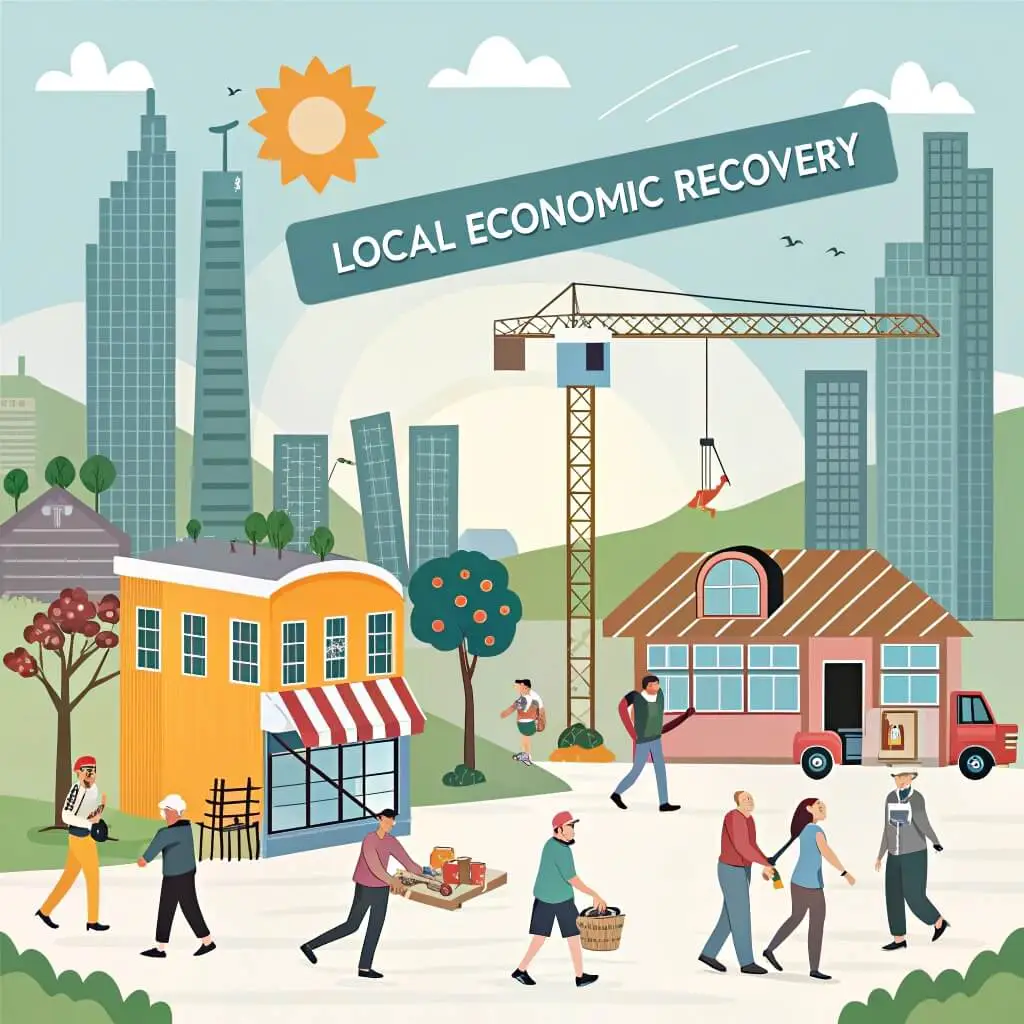In the landscape of modern urban development, few cities have exemplified the power of collaborative economic strategy quite like Richmond, Virginia. At the heart of this progress lies ForwardRVA, an initiative that emerged as a model for local economic recovery through coordinated leadership, inclusive planning, and grassroots engagement. Designed to uplift small businesses, empower minority entrepreneurs, and connect public and private sectors, ForwardRVA provides a practical blueprint for communities seeking sustainable growth.
Rather than focusing on top-down interventions or short-term solutions, ForwardRVA focuses on long-range economic equity, capacity building, and strengthening local networks. This article unpacks the structure, principles, impact, and replicable strategies of ForwardRVA as a forward-thinking approach to regional economic resilience.
What is ForwardRVA?
ForwardRVA is a regional collaborative effort launched in Richmond, Virginia, with the aim of supporting local business development, economic revitalization, and inclusive prosperity. Unlike conventional development programs, ForwardRVA emphasizes collective impact—drawing on the strengths of diverse stakeholders including entrepreneurs, nonprofit organizations, city officials, educational institutions, and private corporations.
This partnership model allows for shared decision-making, resource pooling, and transparent goal-setting, all designed to build a resilient, localized economy that benefits everyone.
Objectives of ForwardRVA
At its core, ForwardRVA is centered around four primary objectives:
- Empowering Local Entrepreneurs: Providing training, mentorship, and resources for small business owners, especially those from historically underrepresented communities.
- Strengthening Business Ecosystems: Creating infrastructure and networks that support long-term business sustainability and innovation.
- Fostering Inclusive Growth: Ensuring that economic opportunities are equitably distributed across neighborhoods, regardless of racial, socioeconomic, or geographic divides.
- Facilitating Strategic Partnerships: Bridging the public and private sectors to coordinate investments, streamline policy, and accelerate progress.
Governance and Structure
ForwardRVA is not a single organization but a coalition—a structured network of stakeholders operating under a shared mission. Its structure includes:
- Steering Committees: Comprised of local leaders and sector experts who guide vision and strategic planning.
- Working Groups: Focused task forces that tackle specific challenges, such as business development, workforce training, or infrastructure improvements.
- Community Partners: Nonprofits, neighborhood associations, and advocacy groups that ensure community voices remain central to planning.
- Business Coalitions: Local business owners and corporate sponsors contribute funding, mentorship, and strategic input.
This decentralized model allows ForwardRVA to stay agile while remaining inclusive, drawing on localized insights to inform broader regional goals.
Key Initiatives and Programs
1. Small Business Resource Hubs
One of the standout efforts within ForwardRVA is the development of Business Resource Hubs across Richmond. These hubs serve as centralized locations where entrepreneurs can access:
- Business planning assistance
- Marketing support
- Legal guidance
- Financial literacy workshops
- Access to micro-grants and funding tools
By creating physical and virtual spaces where entrepreneurs can connect with experts, ForwardRVA lowers the barrier to entry for new businesses and improves the survival rate of existing ones.
2. Skills and Workforce Development
ForwardRVA partners with local colleges, training centers, and workforce agencies to address skill gaps in the regional labor market. Programs are tailored to:
- Upskill residents for high-demand industries
- Offer apprenticeships and internships
- Connect workers with employers through job fairs and networking events
The focus is on building a resilient workforce that can adapt to changing economic needs while earning living wages.
3. Inclusive Investment Strategies
ForwardRVA promotes equitable access to capital by working with financial institutions, foundations, and city agencies to create investment vehicles that target underserved neighborhoods. These include:
- Community loan funds
- Low-interest business loans
- Minority-owned business incentives
- Real estate investment partnerships that prevent displacement
This strategy not only stimulates development in overlooked areas but ensures that growth remains community-centered.
Community Engagement as a Core Element
Unlike many economic initiatives that operate from a distance, ForwardRVA embeds community engagement into every step of its process. This includes:
- Hosting neighborhood listening sessions
- Establishing feedback loops through community liaisons
- Incorporating residents into decision-making boards
These practices build trust and ensure that economic decisions reflect the actual needs and aspirations of Richmond’s residents. When communities feel ownership over projects, their outcomes tend to be more sustainable and widely supported.
Measuring Success: Metrics and Milestones
ForwardRVA uses data-driven metrics to track progress and make adjustments. Some of the key performance indicators include:
- Number of new businesses launched
- Growth rate of minority- and women-owned enterprises
- Job creation figures across sectors
- Investment levels in historically underinvested communities
- Community satisfaction and participation rates
Annual reports and public dashboards are used to maintain transparency and keep stakeholders informed.
Challenges and Adaptability
Like any comprehensive initiative, ForwardRVA has encountered challenges, including:
- Coordinating across diverse stakeholders with varying agendas
- Navigating regulatory and zoning barriers
- Ensuring consistent funding for long-term programs
- Managing growth without triggering gentrification or displacement
However, what sets ForwardRVA apart is its adaptive capacity. When faced with obstacles, the coalition shifts strategies, re-engages stakeholders, and remains committed to learning and iteration.
Lessons from ForwardRVA for Other Regions
Communities beyond Richmond can draw several key lessons from ForwardRVA’s approach:
- Collaboration Over Competition: Economic growth accelerates when stakeholders collaborate rather than compete for limited resources.
- Center Equity in Planning: Intentional focus on inclusion produces more sustainable and just outcomes.
- Engage the Grassroots: Long-term buy-in comes from deep community involvement, not surface-level consultation.
- Invest in Ecosystems, Not Just Projects: Rather than funding isolated ventures, investing in entire support systems for businesses and workers yields compounding benefits.
- Build Infrastructure for the Future: Emphasizing workforce development, digital access, and local supply chains ensures resilience against future disruptions.
The Future of ForwardRVA
ForwardRVA continues to evolve, guided by a long-term vision of a Richmond that is prosperous, inclusive, and adaptable. Future plans include:
- Scaling neighborhood business districts
- Launching youth entrepreneurship programs
- Expanding access to broadband and digital tools
- Fostering green jobs and sustainable development
The model remains responsive to the needs of the region while maintaining fidelity to its founding values of equity, collaboration, and shared prosperity.
Conclusion
ForwardRVA represents more than just an economic development strategy—it is a movement rooted in collaboration, equity, and resilience. By placing community at the center and building strong partnerships across sectors, Richmond has created a blueprint for local economic recovery that other cities can adapt and replicate.
In an era where global challenges demand local solutions, initiatives like ForwardRVA remind us that empowered communities, aligned institutions, and bold vision are the keys to building economies that work for everyone.

